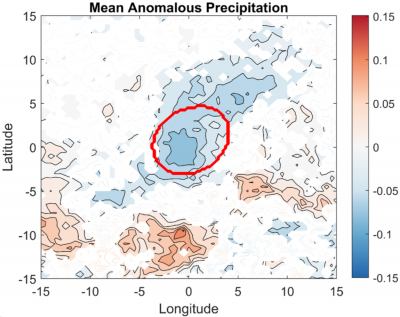Reversing our Understanding of the Influence of Upper-Level Atmospheric Waves on North American Monsoon Rainfall
Scientists identified upper-level atmospheric waves in 40 years of data, creating composites of their three-dimensional structures to assess how they alter rainfall in the North American monsoon.
In contrast with prior case studies of individual events that suggested upper-level atmospheric waves enhance rainfall in the North American monsoon, UC Davis and UC Berkeley scientists showed that, when averaging over 40 years of events, the average upper-level system weakens precipitation over Mexico and the US Southwest. The team created new 3-dimensional composites of TUTT winds and thermodynamic properties, showing that TUTTs consist of strong vortices that are primarily confined to high levels of the troposphere with sinking air near their center in the lowest few kilometers of the atmosphere.
The North American monsoon is frequently affected by transient, propagating upper tropospheric vortices and waves. Sometimes called Tropical Upper-Tropospheric Troughs (TUTTs), these features have been claimed to episodically enhance monsoon rainfall. The project team tracked long-lived TUTTs in 40 years of data, producing composites and case studies of these systems as they moved westward across the North American monsoon region. In vortex-centered composites along the full tracks of long-lived TUTTs, the team found no detectable increase in rainfall within the main TUTT circulation. Instead, negative precipitation anomalies were found within about 500 km of the TUTT center. Dynamical lifting occurred in the southeast quadrant of TUTTs but was confined to the upper troposphere and does not appear to interact with precipitation. Positive anomalies of ascent and rainfall occur south and southeast of TUTTs but lie outside the main TUTT vortex, perhaps indicating concurrent variations in nearby climatological precipitation maxima. In contrast with previous case studies and subjective analyses that showed TUTTs enhance precipitation in parts of northwestern Mexico, these results portray these systems, to first order, as strong vorticity anomalies trapped in the upper troposphere that interact only weakly and indirectly with precipitation.

